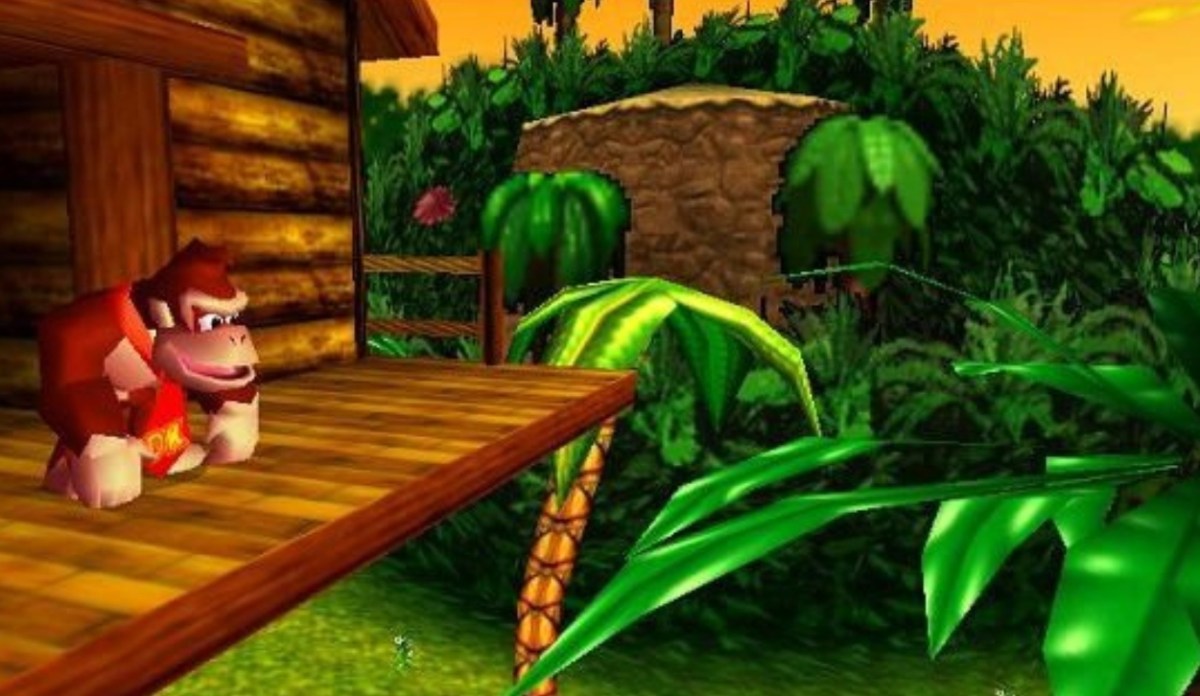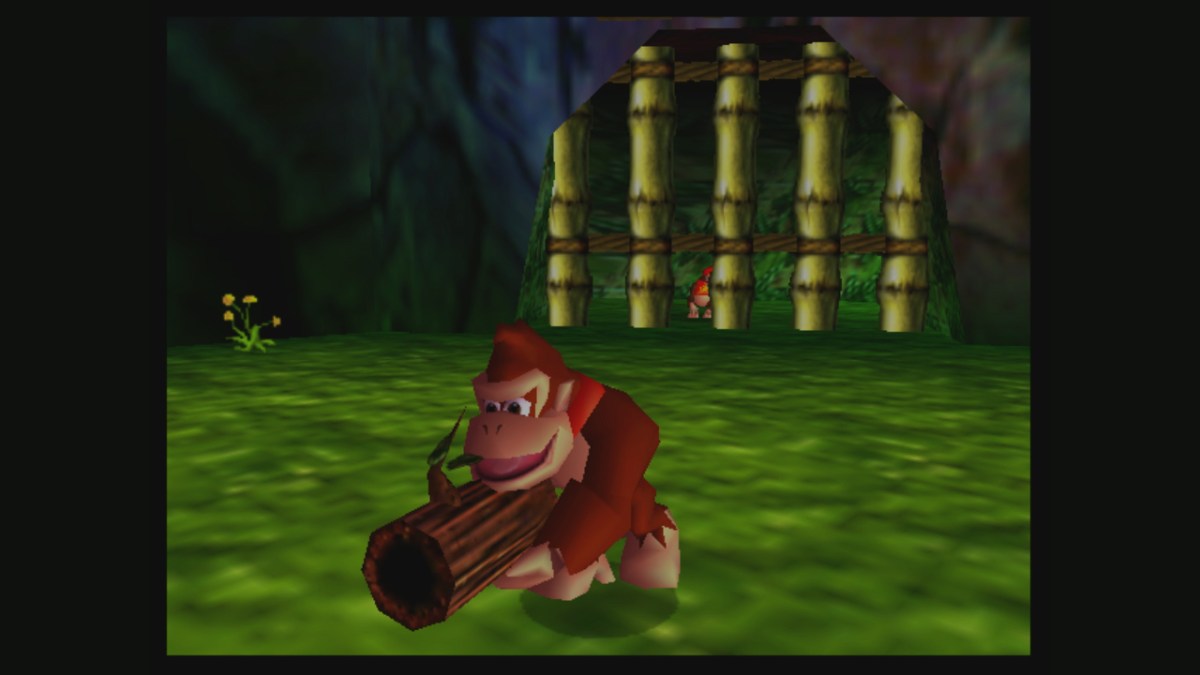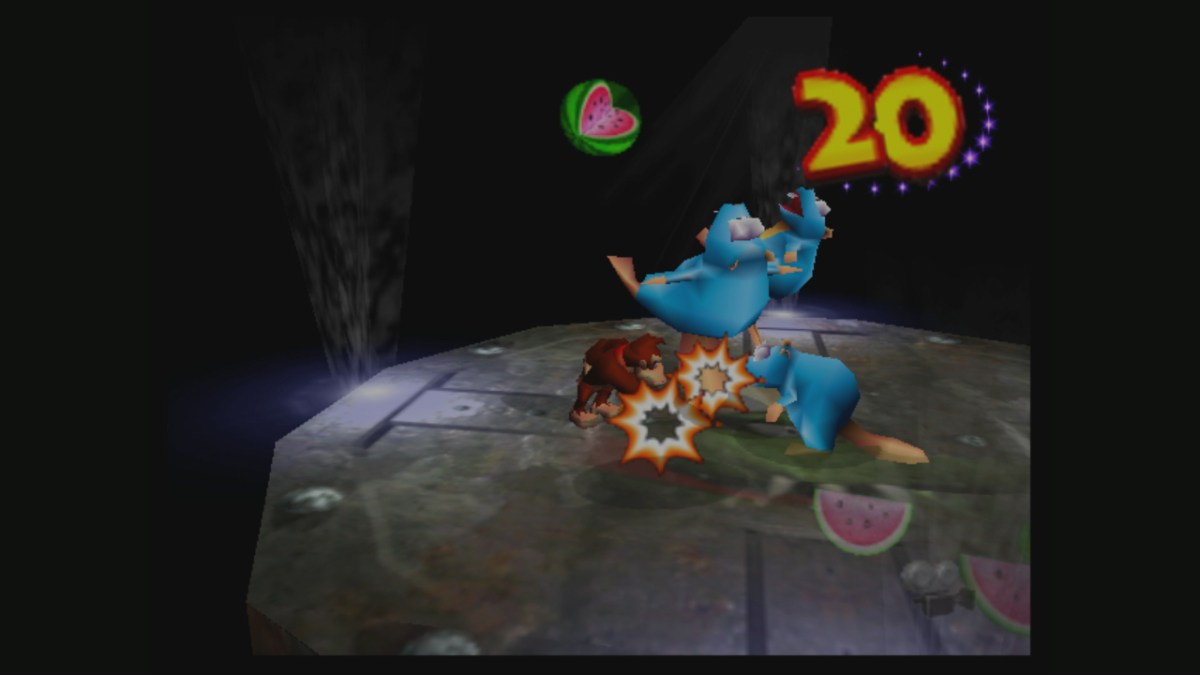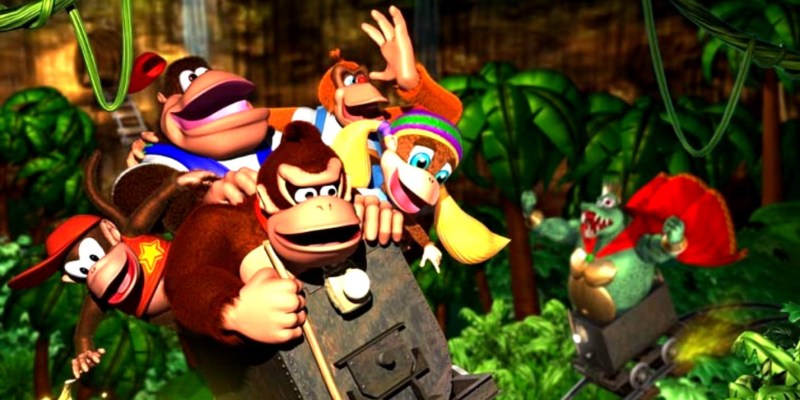Growing up at the tail end of the 32-64-bit era of consoles, I was always a fan of Donkey Kong 64. The game was meant to serve as the next evolution of Rare’s time with the gorilla, and while it did well commercially and critically, time has not been kind to it. Many players view the game as the embodiment of ‘90s excess, taking the tropes and ideas of the 3D collectathon to their breaking point and arguably going past it. It’s telling that, while Nintendo has been eager to re-release all of the previous entries in the Donkey Kong Country series, Donkey Kong 64 was only re-released once on the Wii U.
Within the past month, I’ve had an itching to go back to DK Isle and revisit some of the memories of my childhood. While it’s by no means a perfect game, (Gloomy Galleon sucks the very soul from my being.) I kept on thinking that the game’s infamous reputation was being blown way out of proportion. Compared to a lot of the trends in the AAA industry today, Donkey Kong 64 feels positively restrained and way more well-designed than most open-world action games.
We should all really ask ourselves if the design decisions made back then were really that egregious and if the game is really that bad.
Rare comprised the experts of the 3D collectathon in the ‘90s, a subgenre of the platformer where the goal was to collect certain items in order to open up and progress to more worlds. There are plenty of statistics and breakdowns of how many collectibles you could collect inside of Donkey Kong 64, with the game actually taking home a Guinness World Record for featuring 3,821 items in the game. Yes, that is a lot of items to collect, but when you take a step back and not look at it strictly numerically, all of these collectibles serve a key purpose. The game takes its time to explain to you what each item does and how it can help you progress further into the game. From the most basic colored banana, to the boss crowns, to the legendary golden bananas, and even the consumable items, every item has a clear purpose to help you progress.

Compare that to many modern-day open-world video games, from Marvel’s Spider-Man to The Legend of Zelda: Breath of the Wild to Batman: Arkham City to any Ubisoft open-world game. In those games, the maps are littered with a variety of items and collectibles that come across as busywork to collect that serve no real value to your adventure. Whether it be Riddler Trophies, Tokens, or the three different types of collectibles in Assassin’s Creed Valhalla, open-world games also have an excessive amount of items for you to collect, yet these items often do very little for the overall game progression.
Sure, there are technically fewer items you need to collect compared to in Donkey Kong 64, but those collectibles are mostly meaningless in the grand scheme of things. They may unlock tiny rewards, like bits of lore via audio logs, but those ultimately don’t alter or directly help with progression through the game.
Now, you could make the argument that that’s how it should be. If you’re going to put a ridiculous amount of items inside of a game for players to collect, players should have the choice if they want to collect them and have them only serve as supplemental rewards. You may say that Donkey Kong 64 doesn’t give you a choice and you have to collect all of the items if you want to progress through the game. That’s simply not true. Sure, as a 3D collectathon, you’re encouraged to collect every item you find, but you’re not required to do so and they never come across as mindless padding.
Take the most glaring item in Donkey Kong 64, the colored bananas. In each of the seven worlds, there are 100 colored bananas you need to collect for each of the five playable Kongs. On the surface, you may think that you must collect all 500 bananas in order to complete a level, but that’s incorrect. You always need only a small percentage of them to actually move forward.

In Jungle Japes, the first level, you only have access to two Kongs, meaning you can only collect 200 of the colored bananas, and you only need 60 to actually finish the level. Put another way, you only need to collect 30% of what’s available to you in order to move on. If you want to collect more, you most certainly can, but you’re not forced to do so. You’re not even forced to go back into Jungle Japes after you unlock the other three playable characters. You only need to go back if you actually want to for filling out the checklist.
It’s not dissimilar to how open-world games handle their collectibles, except I find more modern games significantly more clinical and lifeless. One of the most common criticisms of modern open-world game design is that, when you’re exploring the world, so many of the things you need to do in the game feel like a checklist. Almost every open-world game is guilty of this, where you pore over these expansive maps not because you’re eager to progress through the narrative and see the world, but because you just have a checklist to fill out.
It’s even worse when most of the collectibles you need are for mindless crafting recipes or weapon mods that give negligible power-ups that feel like absolutely nothing. There’s usually no joy in getting these items since they’ll be in generic locations that are virtually identical to the last location you just collected the collectible from. It’s just filling out a checklist and moving to the next area with little challenge and adding little beyond padding the runtime. It gets repetitive and boring.
I personally was never bored collecting the myriad of items in Donkey Kong 64. The reason for this is two-fold. First, unlike in modern open-world games, the levels in DK64 are relatively small and contained. Most of the levels are a series of interconnected areas with a bunch of nooks and crannies but are generally easy to navigate and difficult to get lost in. If you’re going to search for collectibles, then the search at least won’t be too terribly long. Second, nearly all of the main collectibles are in areas that are close to the level-progressing Golden Bananas, so as long as you’re actively trying to make progress in the game, you’ll naturally come across these items.

There’s also a healthy amount of variety when it comes to getting these items. While on your way to find the Golden Bananas, you’ll participate in mini-games, platforming challenges, and puzzles that rarely recycle. Some collectibles will ask you to fight a horde of enemies or defeat a boss. One type of collectible has you taking pictures of fast-moving objects. There are even two arcade games that you are able to play through for items! Yes, there are a lot of objects to get, but at least I won’t be bored doing so, which is more than I can say for playing any of the more recent Far Cry games or Gotham Knights.
Again, the kicker is that you don’t even need to get all of the items in Donkey Kong 64 to beat the game. If you just want to see the credits, you’re only going to need half of the Golden Bananas, 1125 colored bananas, to complete four enemy arenas, to defeat all of the bosses, and to beat both of the included arcade games. Even if you want to fully complete the game, DK64 doesn’t force you to collect every single item. Technically speaking, if you want to get to 101% completion, you only need 75% of all of the colored bananas in the game.
I ask you — what is the difference between collecting all of the items in Donkey Kong 64 and trying to platinum an open-world game? No one forces you to do it, and half of the time you get nothing for doing so. It’s a self-imposed challenge where you really only receive bragging rights for it, as very few — and I mean very few — games offer anything remotely worth the time and effort involved to get it. I would much rather 101% Donkey Kong 64 than ever attempt grabbing all of those godforsaken Korok Seeds in Breath of the Wild only for the developers to troll you once you’ve done so. Plus, because of the more focused level design, actually completing Donkey Kong 64 will take you far, far less time than any of the other games I’ve listed up until this point.
Donkey Kong 64 is not a bad game. Not by a long shot. It pushed the collectathon to its breaking point, but it never came across as a mindless chore to complete. I had fun searching through each level for all of the collectibles, but when gamers today mock the game for its excess and then praise the bloated design of open-world games, I have to call foul. Call me a cranky old man, but I find that in comparison to what’s available today, Donkey Kong 64 is the one showing restraint.
